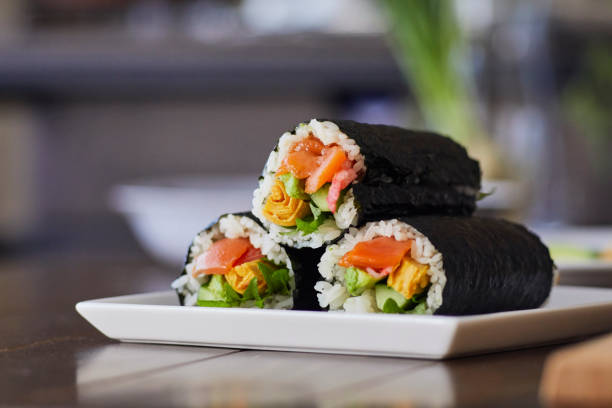Nude sushi, often referred to as “body sushi” or “nyotaimori,” is a distinctive dining experience that merges the artistry of sushi-making with the visual allure of human form. This practice, originating in Japan, has evolved over time and continues to intrigue and divide opinions in contemporary society.
Historical Significance of Nude Sushi
The roots of nude sushi can be traced back to the samurai era in feudal Japan. It was during these times that victorious samurai warriors would celebrate with elaborate feasts, where sushi was served on the nude bodies of geishas. Nyotaimori, meaning “female body presentation,” was a symbol of luxury, sophistication, and the intricate craftsmanship involved in sushi preparation.
Geishas, known for their elegance and poise, played a central role in these celebrations, enhancing the overall aesthetic appeal. Nude sushi was not merely about the food but also about celebrating the beauty of the human form and the meticulous art of sushi-making.
The Art and Craft of Nude Sushi
Central to nude sushi is the precise and artistic craft of sushi-making. Master chefs spend years honing their skills, selecting the freshest ingredients, and crafting sushi that is both visually appealing and delicious. The presentation on a human body transforms the dining experience into a multisensory feast, where taste, sight, and cultural symbolism blend seamlessly.
The model’s body serves as a living canvas, with each piece of sushi meticulously arranged to complement the body’s natural contours. This arrangement is not only about aesthetics but also about creating a respectful and harmonious dining experience. The delicate balance between culinary artistry and visual presentation is what makes nude sushi a unique and unforgettable experience.
Navigating Ethical Concerns
As nude sushi gained popularity beyond Japan, it encountered both fascination and criticism. Critics argue that the practice can objectify women and raise ethical concerns about consent and exploitation. These debates have led to increased scrutiny and the implementation of ethical guidelines to ensure respect and professionalism in nude sushi practices.
Modern interpretations of nude sushi often emphasize inclusivity and diversity, featuring models of various body types and backgrounds. This approach challenges traditional norms and promotes body positivity, reflecting broader cultural shifts towards respect and equality. Ensuring that all participants are comfortable and valued is central to these contemporary adaptations.
The Contemporary Scene of Nude Sushi
Today, nude sushi is often featured in exclusive events and high-end dining experiences. These occasions are carefully curated to create an atmosphere of respect, consent, and professionalism. The practice has also inspired variations, such as “nantaimori,” where sushi is served on the bodies of men, challenging traditional gender norms and expanding the inclusivity of the experience.
Modern nude sushi events often incorporate innovative ingredients and presentation styles, blending tradition with contemporary culinary trends. This fusion of old and new offers diners a unique and unforgettable experience that transcends conventional dining norms, providing a profound and thought-provoking journey into the world of Japanese culinary art.
Conclusion
Nude sushi represents a fascinating intersection of tradition, art, and modernity. As it continues to evolve, it reflects changing societal values and the dynamic nature of cultural practices. Whether celebrated for its artistry or critiqued for its ethical implications, nude sushi remains a compelling and thought-provoking aspect of the culinary world, offering a unique glimpse into the rich heritage and innovative spirit of sushi culture.




